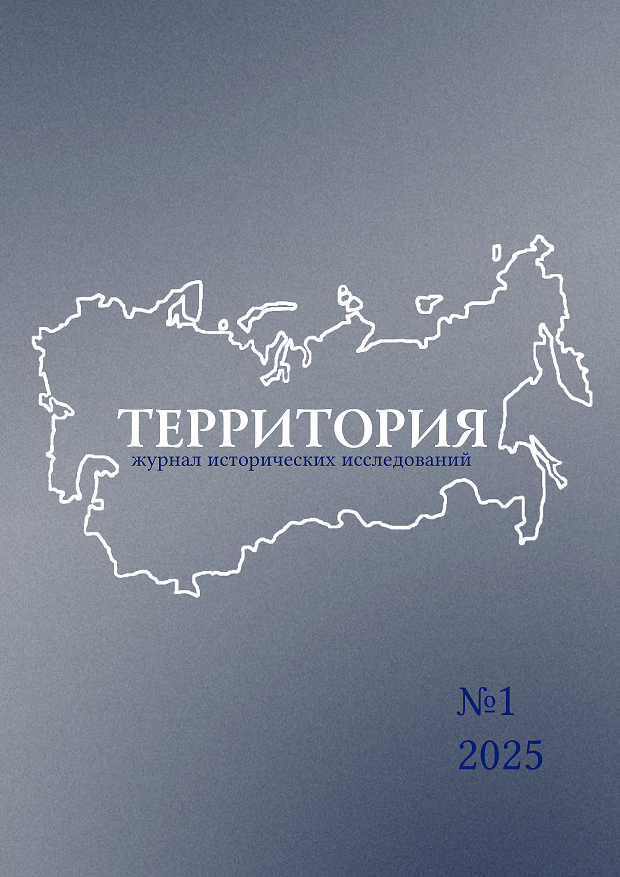Historical and Cultural Heritage Protection in the RSFSR and BSSR: Administration Practices, Financing, and Boundaries of Possibilities (Second Half of the 1960s – mid-1970s)
Abstract
In the USSR in the second half of the 1960s the institutionalization of historical and cultural heritage protection intensified. Societies for the protection of monuments appeared in several Soviet republics, including Lithuania (1965), Kyrgyziya, Moldavia, Ukraine, Belarussia and Russia (1966). This article analyses the differences in the administrative and financial capacities of two republican structures – the All-Russian Society for the Protection of Monuments of History and Culture (VOOPIiK) and the Belarusian Voluntary Society for the Protection of Monuments of History and Culture (BDOOPIiK). The findings based on a wide range of archival documents, suggest that the network of voluntary societies for the protection of monuments established in the USSR in the post-war period was a system of resource allocation. An integral part of such structures was a mechanism aimed, in the broad sense of the word, at regulating public statement. The functionality of this mechanism exhibited significant variations from republic to republic. The pivotal factor in this regard was the socio-economic conditions in which the members of the societies found themselves. The article demonstrates that the administration of the Russian and Belarusian Societies formed a system in which the BDOOPIiK had serious advantages over the VOOPIiK in terms of promoting its agenda and ability to influence decision-making process. The BSSR had a stable system of funding for the Republican Society for the Protection of Monuments, while VOOPIiK in the central regions of the RSFSR faced a constant lack of resources.
Downloads
References
Банных М. П. Участие общественности в деятельности исполкомов местных Советов. М.: Юрид. лит., 1972. 152 с.
Болтунова Е. М., Егорова Г. С. Территория и история: позднесоветские проекты «Города-герои» и «Золотое кольцо». М.: Кучково поле, 2022. 400 с.
Болтунова Е. М., Егорова Г.С. Всесоюзный / Всероссийский: нереализованный проект создания Общества охраны памятников СССР // Правила игры на общественных началах. Власть и добровольные общественные организации в СССР 1960–1990-х гг. / под общ. ред. Г. А. Янковской. Пермь: Издательский центр Пермского государственного национального исследовательского университета, 2023. С. 53–68.
Голотин И. В. Государственная политика в области охраны памятников истории и культуры в 1953–1985 гг. (по материалам Ярославской области). Автореферат дисс. на соискание ученой степени кандидата исторических наук. Ярославль, 2011. 23 с.
Голубев А. В. Западный наблюдатель и западный взгляд в аффективном менеджменте советской субъективности // После Сталина. Позднесоветская субъективность (1953–1985). Сборник статей / под ред. А. Пинского. СПб.: Издательство Европейского университета в Санкт-Петербурге, 2018. С. 219–253.
Душкина Н. О. К 40-летию со дня основания ИКОМОСа. Международные доктрины ИКОМОСа и отечественная практика сохранения наследия // Реставратор. 2006. № 1(10). С. 18–22.
Мартин Т. Империя «положительной деятельности». Нации и национализм в СССР, 1923–1939. М.: РОССПЭН, 2011. 664 с.
Мельникова Е. А. Интеллигенция как событие: валаамское наследие и его хранители в позднем СССР // Ab Imperio. 2023. № 1. С. 181–220.
Неплюев П. А. Публичная история «по-советски». Региональные отделения Всероссийского общества охраны памятников истории и культуры: «бюрократические правила игры» и историко-культурный активизм // Вестник Пермского университета. История. 2022. № 58(3). С. 79–93.
Пастернак А. М. Становление Белорусского добровольного общества охраны памятников истории и культуры // Наука – образованию, производству, экономике: материалы XIX (66) Регион. науч.-практ. конф. преподавателей, науч. сотрудников и аспирантов, Витебск, 13–14 марта 2014 г: в 2 т. Витебск, 2014. Т. 1. С. 345–346.
Deschepper J. Between Future and Eternity: A Soviet Conception of Heritage // International Journal of Heritage Studies. 2019. Vol. 55. № 5. P. 491–506.
Donovan V. “How Well Do You Know Your Krai?” The Kraevedenie revival and Patriotic Politics in Late Khrushchev-Era Russia // Slavic Review. 2015. Vol. 74. № 3. P. 464–483.
Donovan V. Chronicles in Stone: Preservation, Patriotism, and Identity in Northwest Russia. Ithaca; London: Northern Illinois University Press, 2019. 246 p.
Gapova E. “The Land under the White Wings”: The Romantic Landscaping of Socialist Belarus // Rethinking Marxism. 2017. Vol. 29. № 1. P. 173–198.
Kelly C. Socialist Churches: Radical Secularization and the Preservation of the Past in Petrograd and Leningrad, 1918–1988. DeKalb: Northern Illinois University Press, 2016. 413 p.
Kelly C. The Leningrad Affair. Remembering the Communist Alternative in the Second Capital // Slavonica. 2011. Vol. 19. № 9. P. 103–122.
Mijnssen I. Russia's Hero Cities: From Postwar Ruins to the Soviet Heroarchy. Bloomington: Indiana University Press, 2021. 332 p.
Pattle Sh. Forging the Golden Ring: Tourist Development and Heritage Preservation in the Late Soviet Union // The Slavonic and East European Review. 2018. Vol. 96. № 2. P. 283–309.
Qualls K. D. From Ruins to Reconstruction: Urban Identity in Soviet Sevastopol after World War II. Ithaca: Cornell University Press, 2010. 214 p.

